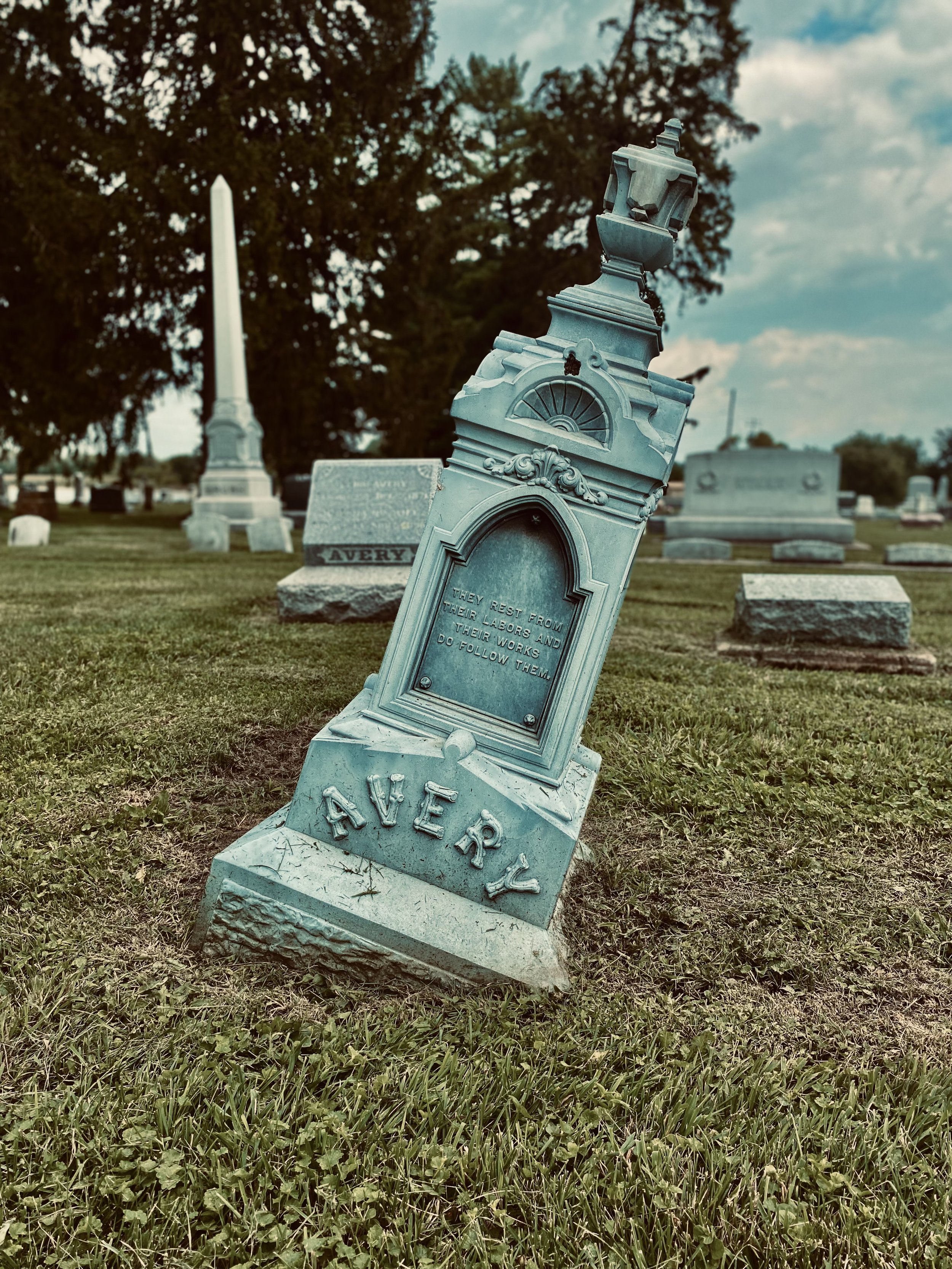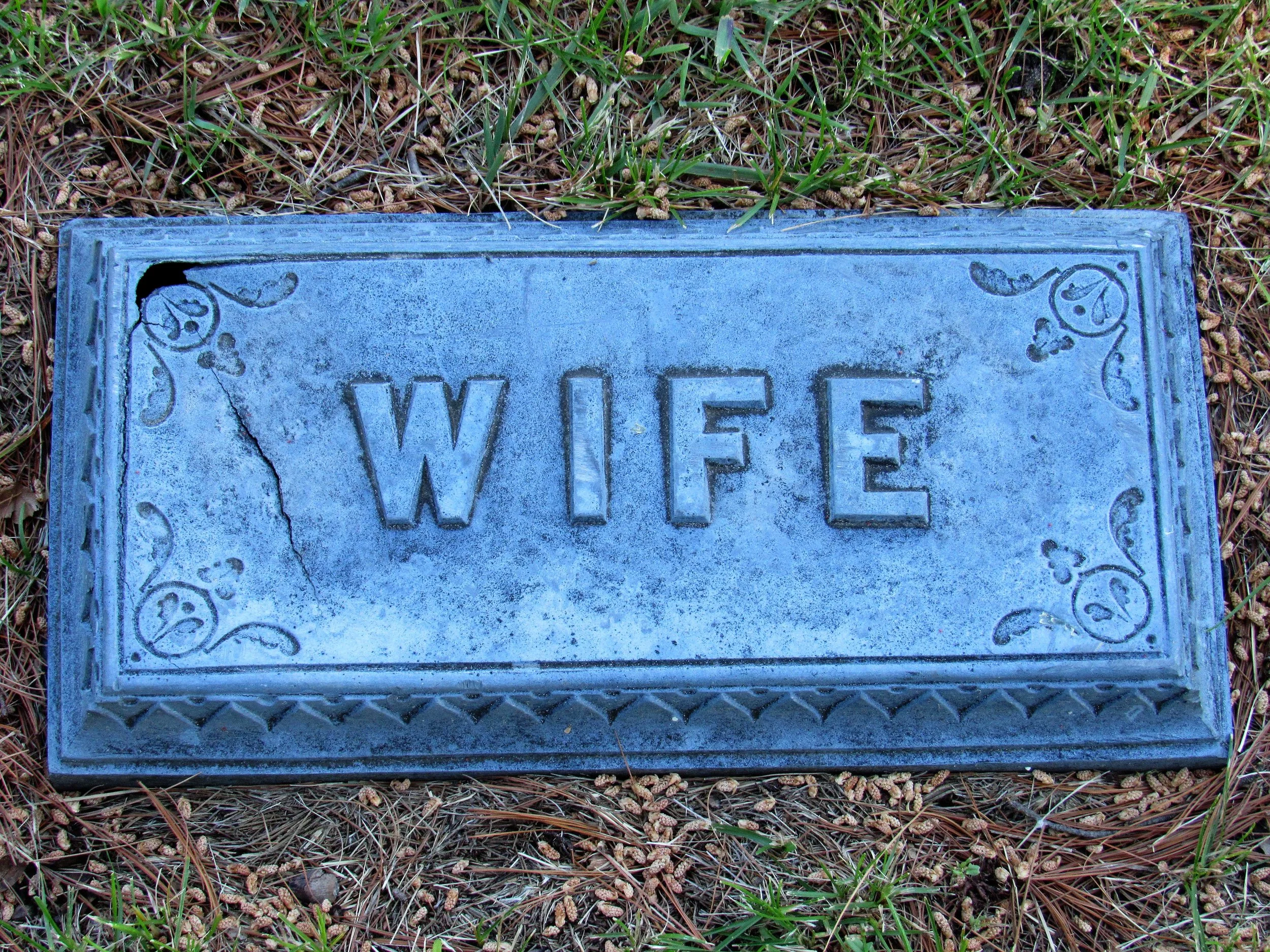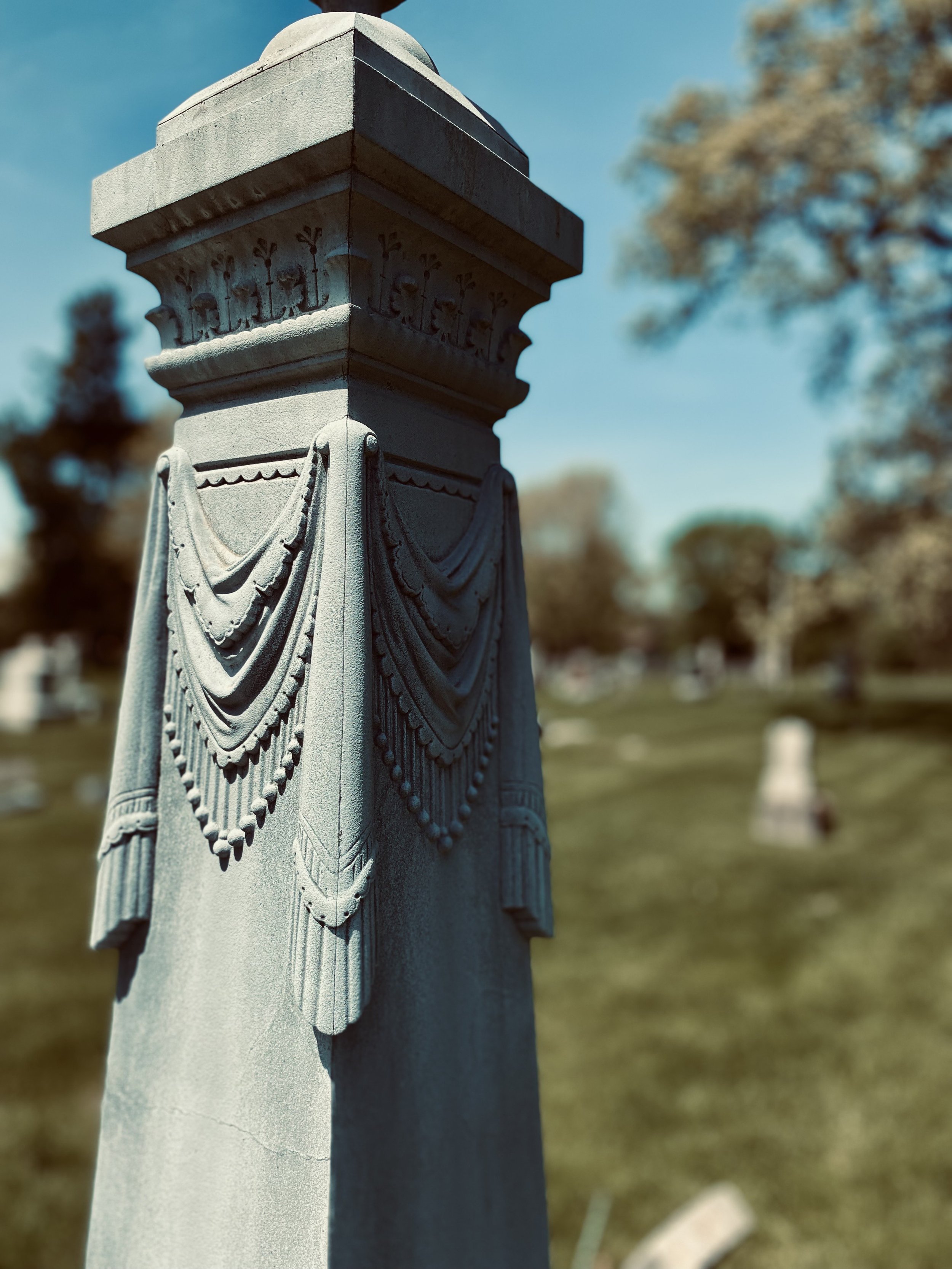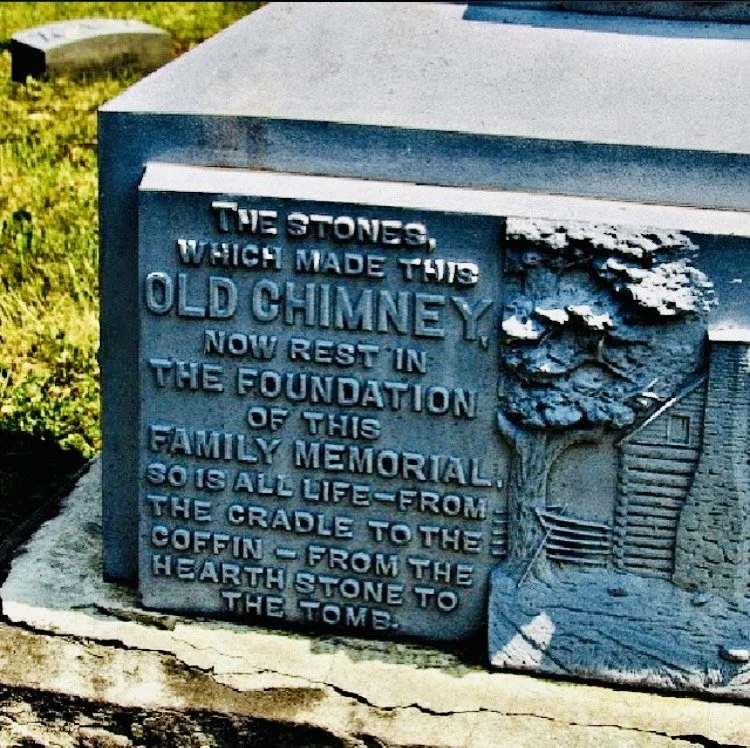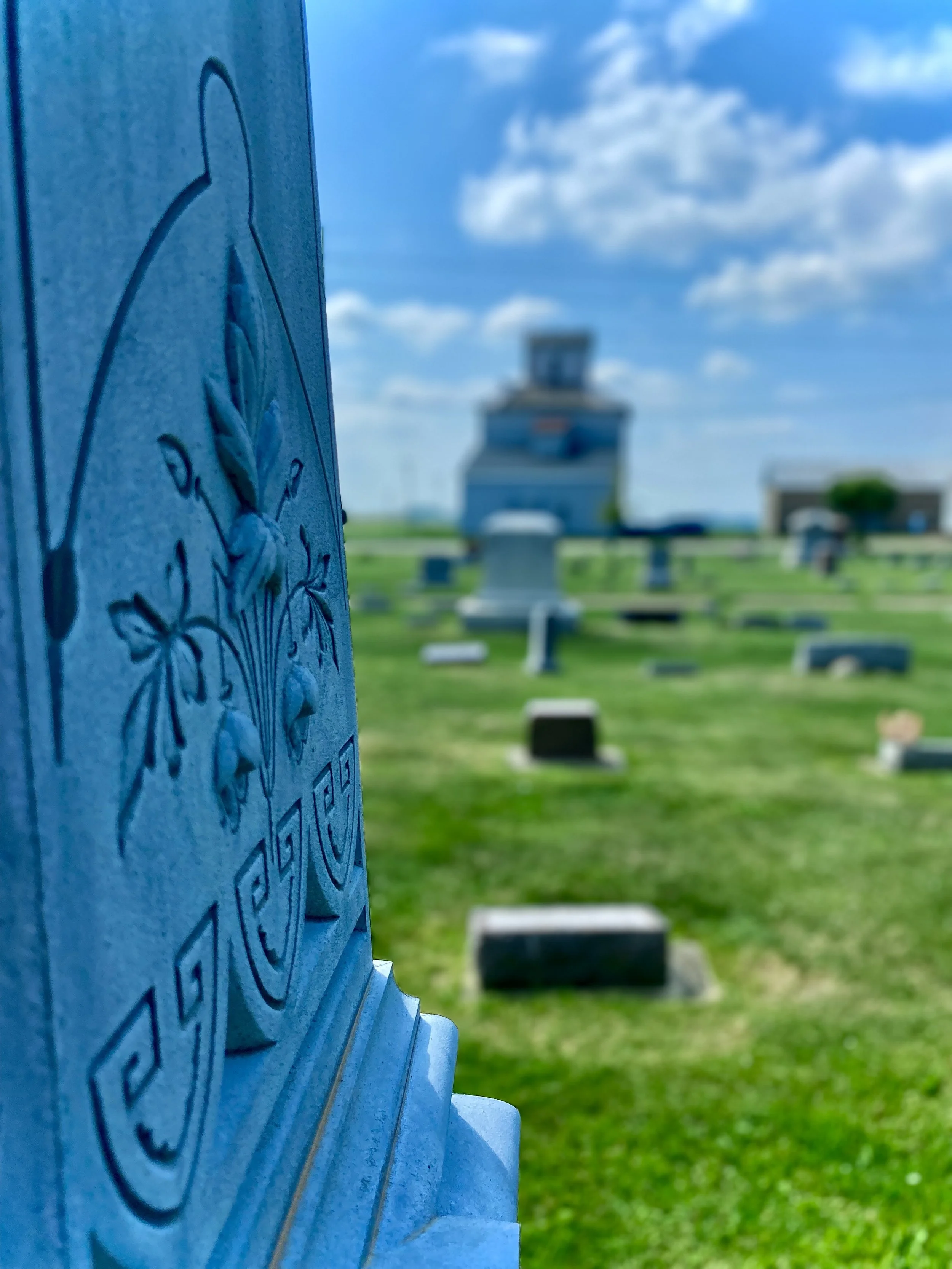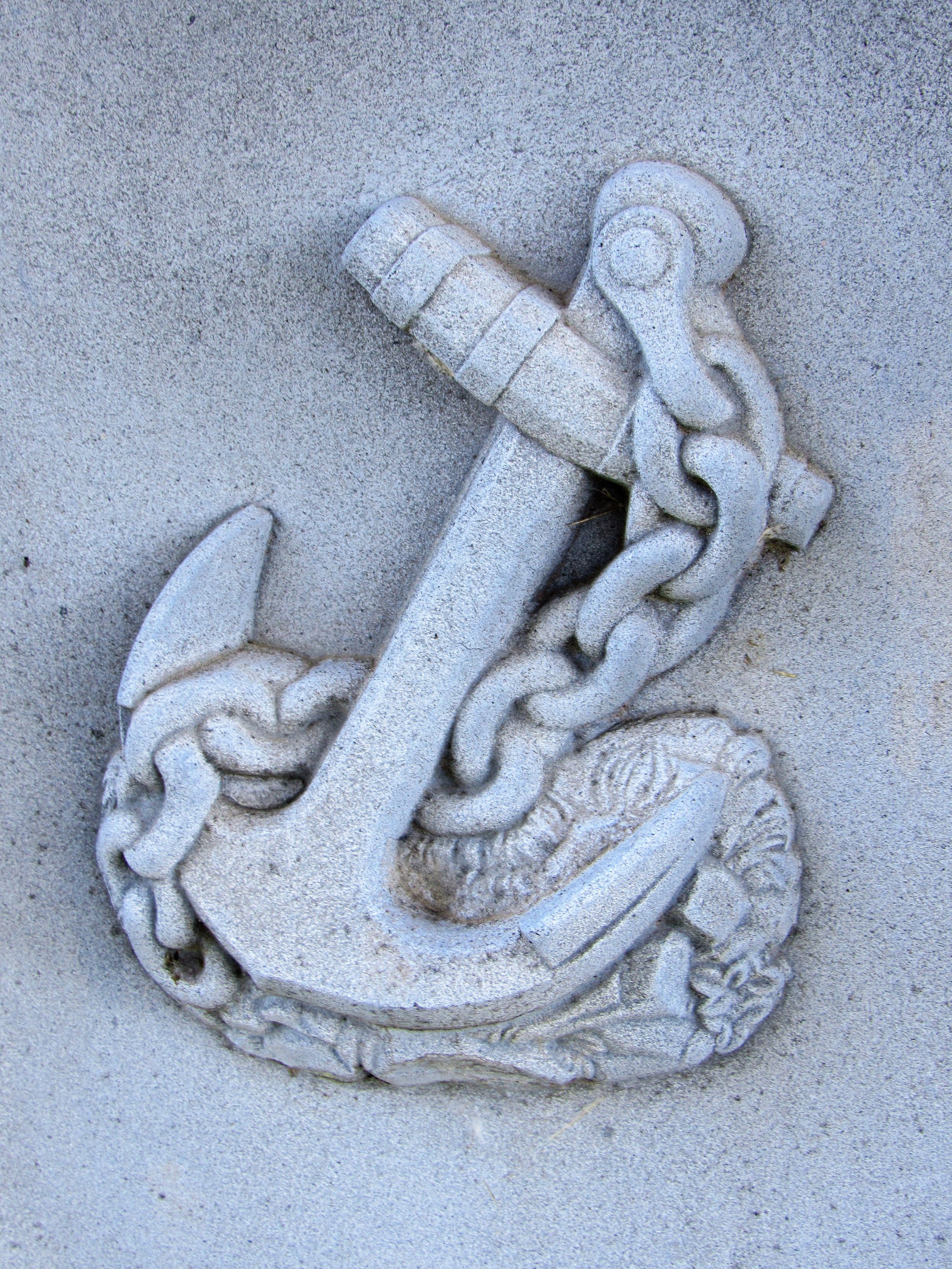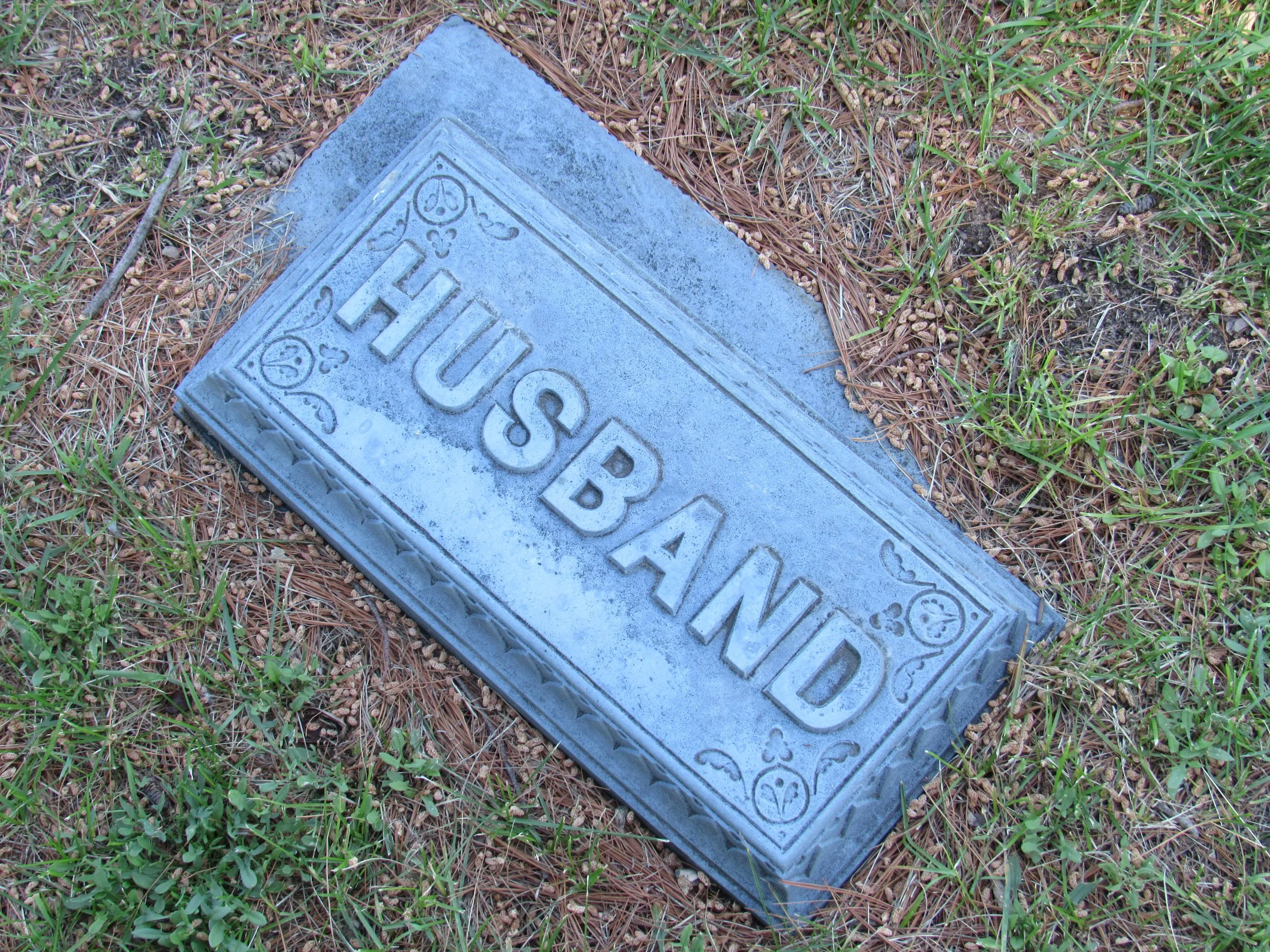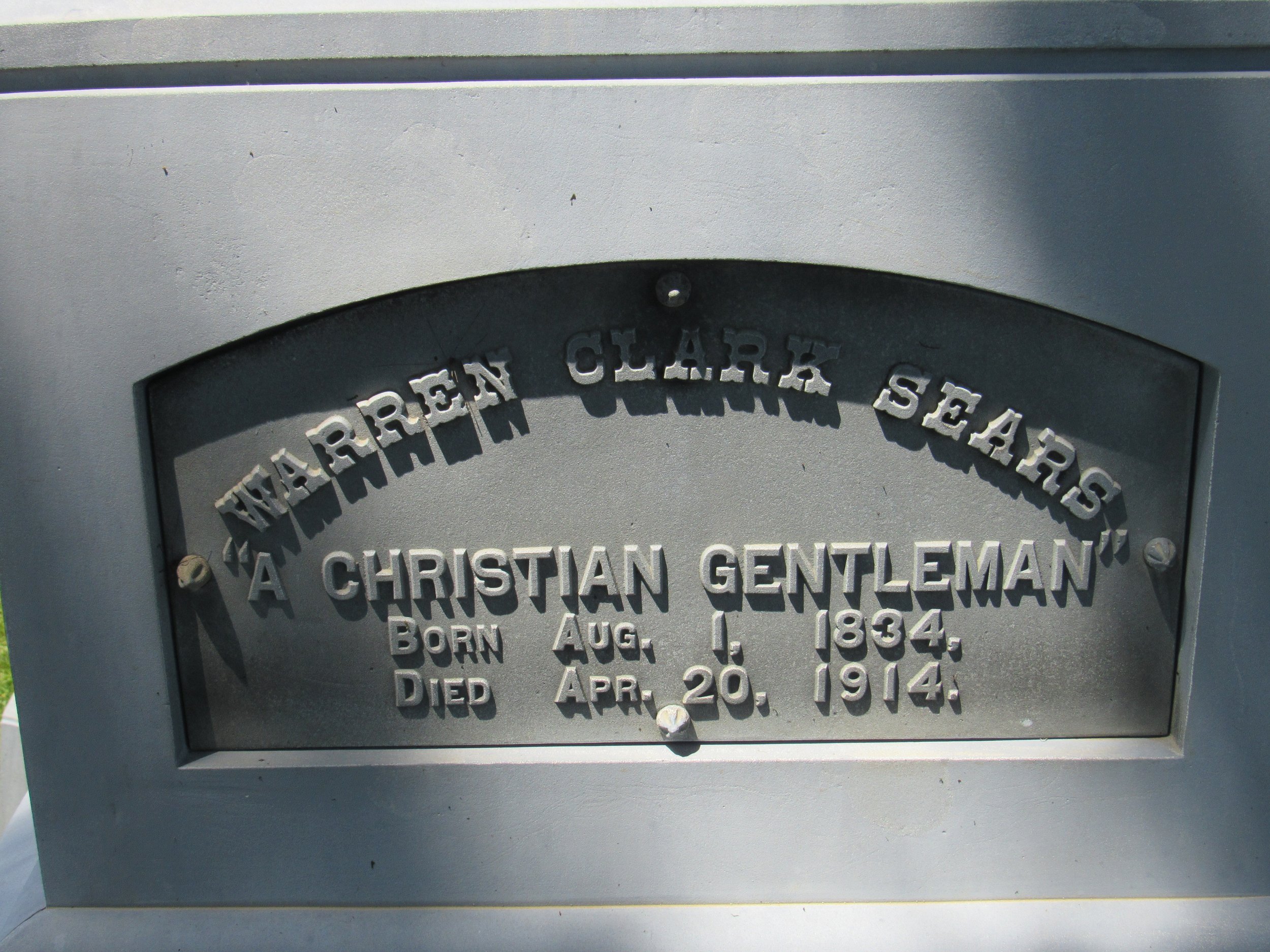White Bronze Monuments
White Bronze Monuments were commonly used as gravestones between 1874 – 1914. They were composed of copper, tin, and zinc, which made them a blueish-grey color. Another interesting unique feature is the fact that they are hollow inside.
They were very popular due to being less expensive (ranging in price from $10 to $5,000) and a durable alternative to stone. Although some cemeteries banned them.
Until 1939, panels were manufactured that could be bolted-on to the markers, so that a monument could be kept up to date with newer burials.
Avery White Bronze Monument
Northern Illinois
Due to their hollow construction, a common urban legend claimed that bootleggers used them to hide contraband liquor during Prohibition.
The Manley Family White Bronze Memorial
Steward County
Steward, Illinois
Lee County
The making of these monuments came to an end in 1914, due to the government taking over the Monumental Bronze Company of Bridgeport, Connecticut, for the manufacturing of gun mounts and munitions for World War I.
Demand for White Bronze Monuments went out of fashion soon afterwards and were no longer made, especially after the price of zinc tripled in cost.
Base of the Wheeler - Baker Family White Bronze Monument
North Cemetery
St Charles, Illinois
Kane County
